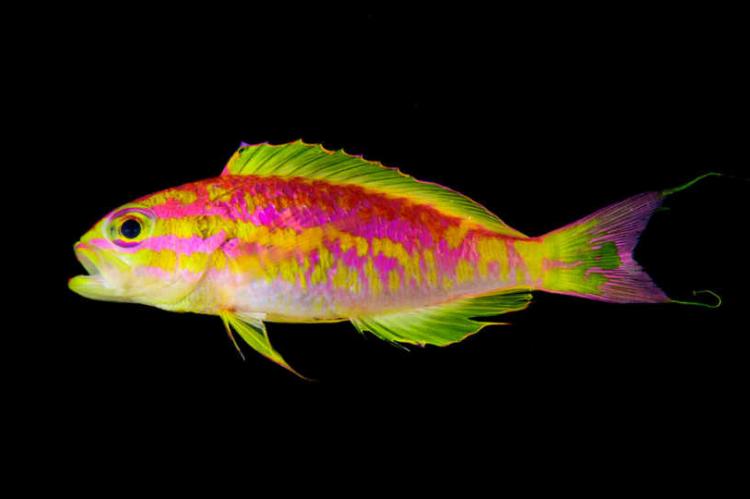New species of vivid-coloured fish discovered in deep water
First spotted at a depth of 400 feet beneath the ocean's surface in the remote Brazilian archipelago of St. Paul's Rocks, this cryptic fish inhabits rocky crevices of twilight zone reefs and is found nowhere else in the world.
During a recent expedition to St. Paul’s Rocks, Atlantic Ocean, a distinctive and previously unknown species of Anthiadinae was collected at a depth of 120 m. A genetic analysis indicated the undescribed species is a member of the genus Tosanoides, which was only known to occur in the Pacific Ocean.
Dr. Luiz Rocha, California Academy of Sciences's Curator of Fishes and co-leader of the Hope for Reefs initiative and post-doctoral fellow Dr. Hudson Pinheiro are part of a deep-diving research team that ventures to twilight zone reefs--mysterious coral habitats stretching across a narrow band of ocean 200 - 500 feet beneath the surface.
"This is one of the most beautiful fishes I've ever seen," says Dr. Luiz Rocha, "It was so enchanting it made us ignore everything around it."
"Fishes from the twilight zone tend to be pink or reddish in color," added fellow Dr. Hudson Pinheiro. "Red light doesn't penetrate to these dark depths, rendering the fishes invisible unless illuminated by a light like the one we carry while diving."
Nearly 600 miles offshore the coast of Brazil, St. Paul's Rocks is so remote that the diving team had to use the research vessel M/V Alucia as their homebase to explore the archipelago. The rocky outcroppings are extensions of the Mid-Atlantic Ridge--an active, tectonic plate boundary--puncturing the ocean's surface. Given the region's unique geology and isolated location, many of the species that live there are found nowhere else on Earth.
Back at the Academy, DNA analysis revealed the new species is the first Atlantic-dwelling member of its genus. The new fish description published today in Zookeys.





























